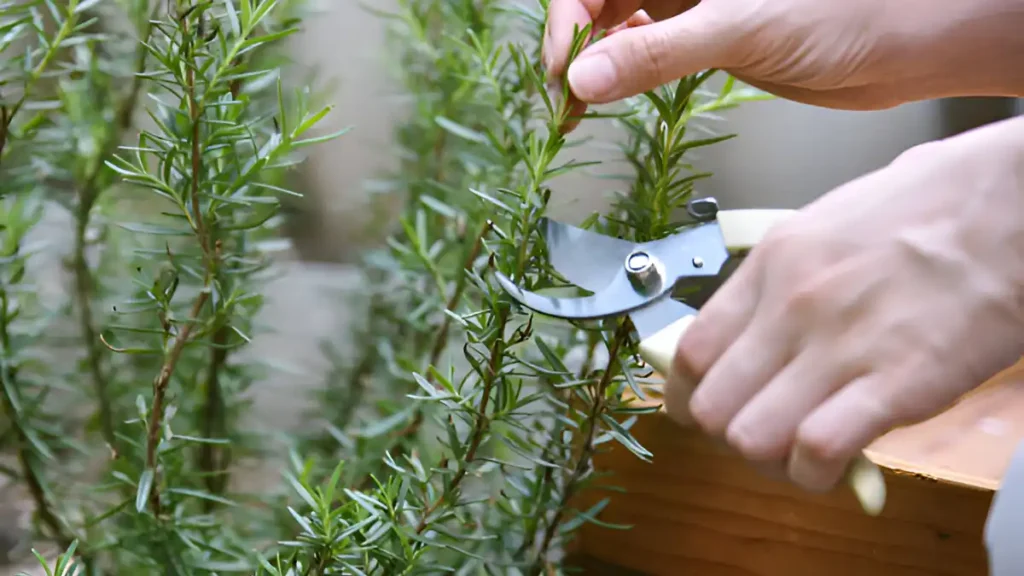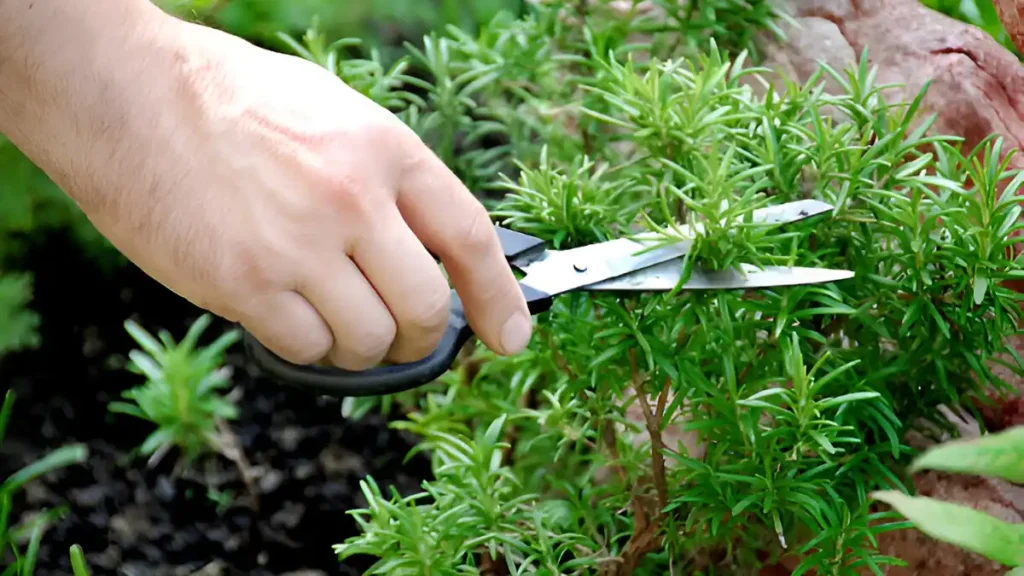Pruning rosemary is vital for keeping the plant healthy and alive and fostering new development. Regular pruning of rosemary, a tough evergreen plant, prevents it from being too woody and encourages a bushier shape. These are some crucial guidelines on how to prune rosemary.
Benefits of pruning rosemary:
To keep rosemary healthy and encourage rapid development, pruning is necessary. Frequent pruning reduces disease risk, promotes bushier growth, and keeps the plant from getting too woody or lanky. It also enhances air circulation. Furthermore, pruning ensures that the plant produces more fragrant leaves that are ideal for culinary usage and help form the plant, making it more aesthetically beautiful.
Understanding when to prune rosemary:
When the rosemary plant has done flowering, prune it in late spring or early summer. This time promotes healthy new development and enables the plant to recuperate swiftly. As you shape the plant to the right size, concentrate on cutting off any dead or broken branches. Stems can be slow to regrow from woody, older sections of the plant, so try to avoid cutting into them. Pruning rosemary regularly keeps it bushy and keeps it from getting too woody or overgrown.

Best tips on how to prune rosemary to promote growth:
- For precise cuts, use scissors or pruning shears with sharp edges. Illnesses are stopped from spreading by clean instruments.
- To maintain the health of your rosemary, wipe the blades with rubbing alcohol both before and after pruning.
- To keep the plant bushy or spherical, trim the outer branches. Try not to remove too much of the center.
- Prune to increase the plant’s internal airflow, which helps ward off fungus-related illnesses. Eliminate any branches that are dead, broken, or crossing.
- Never cut a leaf close to its node or where new growth is beginning. This promotes the growth of new branches.
- Stems that are woody and aged should not be cut into since rosemary does not grow well from these locations. Concentrate on pruning flexible, green stems.
- Plants should never have more than one-third removed at once. Pruning a plant too much might cause stress and impede its growth. Rejuvenate your overgrown or woody rosemary by pruning a little more each year instead of all at once.
- After cutting, give the plant plenty of water to aid in its recovery and promote new growth. To encourage healthy regrowth, treat sparingly with a balanced organic fertilizer
Conclusion:
Trimming rosemary is an easy yet necessary operation to maintain the plant’s health and productivity. By regularly pruning the plant, you may keep it from getting too woody, promote new growth, and preserve its shape. Pruning is best done in the spring or early summer when a third of the plant should be trimmed back. Dead or overgrown branches should be removed in particular. You may learn how to prune rosemary properly by following these tips.
Certainly! If you’d like to learn more, please consider following our WhatsApp Channel: Harvest Gardening
A frequently asked questions:
Q1: How to prune rosemary in a pot?
A1: Trim back the upper third of the rosemary plant in a pot, paying particular attention to removing any woody stems and cutting slightly above a leaf node. This keeps the plant from growing lanky and promotes bushier growth.
Q2: Can I prune rosemary in winter?
A2: Winter pruning should be avoided as much as possible, especially in colder regions where plants are more vulnerable to frost damage. If necessary, light pruning of damaged or dead branches is acceptable.
Q3: What should I do if my rosemary becomes too woody?
A3: If your rosemary becomes too woody, you can cut it back hard in early spring. However, be careful not to cut into the oldest wood, as this might not regenerate. Focus on cutting back to where you see some green growth.
Q4: Is it okay to prune rosemary flowers?
A4: You can trim the blossoms of rosemary, yes. This can promote increased leaf growth and keep the plant from expelling too much energy in the process of producing seeds.



